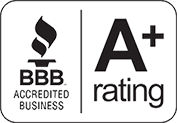If you’re like most people, indoor air quality probably isn’t something that you give much thought to. Still, this might change quickly once you learn about all the potentially harmful pollutants that are found in most houses and other buildings. With this in mind, here’s everything you need to know about indoor air pollution, including where it comes from and how you can overcome it.
The Facts About Indoor Air Pollution
Indoor air pollution is a major problem that affects the vast majority of homes, offices, and other buildings. According to studies performed by the EPA, the concentration of certain airborne pollutants is often anywhere from two to five times higher inside of buildings than the typical concentration outdoors. This can potentially have major consequences for your health, especially considering the fact that the average American spends approximately 90% of their time indoors.
Another major issue is that most people keep their houses tightly closed throughout much of the year. This is obviously important in terms of your comfort, as it makes it far easier to keep your home heated in the winter and properly cooled during the hot summer months. However, keeping your windows and doors constantly closed can also greatly increase the concentration of airborne pollutants since they’ll end up trapped inside of the house.
Common Sources of Indoor Air Pollution
Indoor air pollution can come from a huge number of different sources both inside and outside the home. For instance, houses with attached garages often have high concentrations of exhaust and gas fumes due to the vehicles parked inside. The same can also be true if you live on a busy street since the exhaust fumes can easily seep inside of your home if it isn’t well-sealed. Your garage can be a major source of fumes and airborne pollutants given off by any gasoline, paint, pesticides, and other things stored inside of it.
Smoking inside the home or by a door is another obvious source of air pollution. Still, even many routine household activities that are seemingly safe can be a major source of pollutants. Cooking and cleaning are obviously things everyone has to do, but they can produce lots of pollutants. For instance, cooking on a natural gas or propane stove releases carbon monoxide, formaldehyde, and other harmful pollutants into the air. Heating up fats or oils to high temperatures also releases pollutants, and the same is true every time you accidentally burn something or use your self-cleaning oven.
Many cleaning products can give off different, potentially harmful chemicals. Worse still, pollution can result even when you’re not using some of these products, as they can also release harmful gases while they’re sitting inside of your cabinet or under your sink.
The materials your home is built with and your furnishings are usually some of the main sources of airborne pollutants, especially volatile organic compounds (VOCs). There are many different VOCs found in building materials and furniture, and these can be “off-gassed,” or released into the air. These can either result from new materials due to chemicals used in the manufacturing process or due to the materials degrading as they age.
If you’ve ever bought a new mattress and noticed that it gave off a chemical smell, that smell is a result of VOCs inside the mattress off-gassing into the air. Mattresses, furniture foam, and upholstery materials can all be major sources of VOCs depending on what they’re made from. Many of these items can also continue giving off VOCs for many years even if you can’t smell anything. In fact, smell isn’t really a reliable judge of VOCs since many of them are odorless.
Dry-cleaned clothing also gives off a large number of certain chemicals, usually a toxic VOC known as tetrachloroethylene. This chemical will usually remain in the clothing and continually off-gas until the item has been fully washed with water. Worse, the concentration increases each time you have the clothes dry-cleaned again.
Building materials are generally the biggest culprit behind VOCs. Carpets, vinyl flooring, laminate, and linoleum all produce numerous VOCs. Other common sources include glues and adhesives, paint, varnish, caulking, and sealants.
Some of the most common VOCs found in most homes include:
- Formaldehyde
- Benzene
- Tolulene
- Ethylene glycol
- Methylene chloride
- Xylene
- Tetrachloroethylene
You don’t really need to understand what these different chemicals are to realize that they’re not something you want to be breathing day in and day out.
The Impact of VOCs and Other Harmful Pollutants
Breathing in VOCs and other airborne pollutants can potentially have numerous short- and long-term consequences for your health. Short-term issues can include headaches, dizziness, nausea, and irritation of the eyes, throat, and sinuses. VOCs can also worsen asthma, COPD, and other respiratory problems. Over the long term, chronic exposure to VOCs has been linked to serious damage to the nervous system, brain, and kidneys. Many VOCs are also carcinogenic, which means that they may lead to various types of cancer.
How to Overcome Problems with Indoor Air Pollution
The fact that there are so many different potential sources of VOCs and other pollutants makes it virtually impossible to keep them out of your home. Making sure that whatever mattress, couch, or other furniture you buy is VOC-free is one place to start, but this won’t do anything about the VOCs given off by building materials and other items in the house. Nonetheless, there are steps you can take to reduce the concentration of airborne pollutants and limit your exposure.
Making sure to regularly open your windows can help to replenish the fresh air inside of your residence. Still, this method isn’t really possible at all times of the year. The better option is to install a whole-home air purifier or air scrubber. These units work in tandem with your HVAC system to filter VOCs and other pollutants out of the air. They also filter mold spores, pollen, pet dander, dust mites, and other allergens, and they even work against airborne bacteria and viruses.
A whole-home air purifier uses an extremely efficient air filter that can trap the vast majority of airborne particles. Some units can trap as much as 95% of VOCs and other smaller particles and potentially up to 99% of larger airborne particles like mold and pollen. Studies have shown that this type of air filtration system can reduce the concentration of indoor airborne pollutants by more than 90% within 24 hours of being installed. In this way, they’re by far the most effective method for improving your home’s air quality and protecting your family’s health.
Indoor Air Quality and HVAC Experts
If you’re worried about the air quality inside of your Las Vegas home, the experts at Sierra Air Conditioning & Plumbing are here to help. We offer indoor air quality testing to help you get a more accurate picture of the issues you’re facing, and we can help you choose the best solution for your specific situation. We install whole-home air purifiers, air scrubbers, UV light systems, and other indoor air quality solutions. Our team of experienced technicians can also take care of any heating or cooling problems you might be experiencing by maintaining or repairing your HVAC system. We also install new heating and cooling equipment and carry a wide selection of different models and types. For more information about indoor air quality or our other services, give us a call today.





